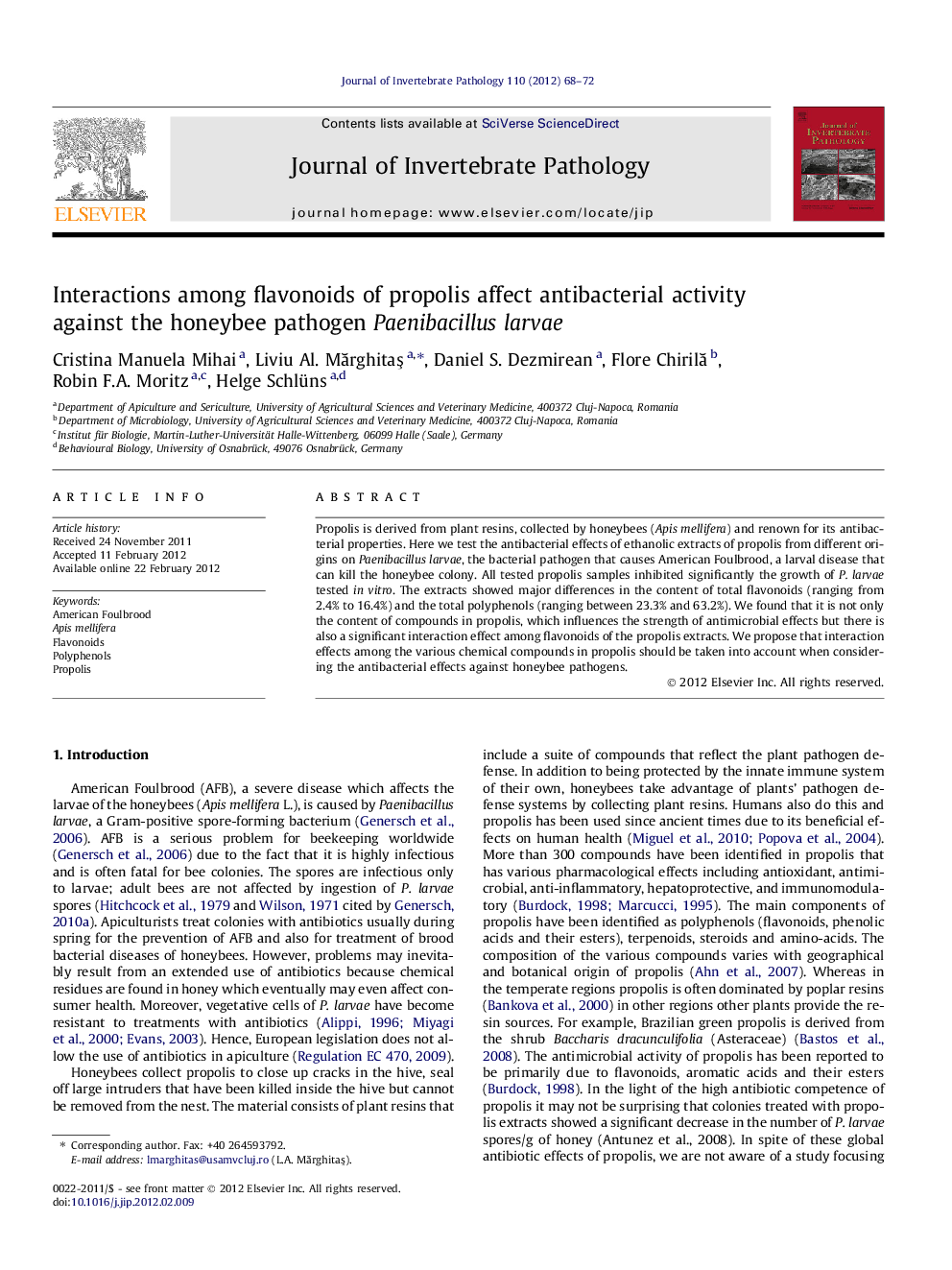| Article ID | Journal | Published Year | Pages | File Type |
|---|---|---|---|---|
| 4557924 | Journal of Invertebrate Pathology | 2012 | 5 Pages |
Propolis is derived from plant resins, collected by honeybees (Apis mellifera) and renown for its antibacterial properties. Here we test the antibacterial effects of ethanolic extracts of propolis from different origins on Paenibacillus larvae, the bacterial pathogen that causes American Foulbrood, a larval disease that can kill the honeybee colony. All tested propolis samples inhibited significantly the growth of P. larvae tested in vitro. The extracts showed major differences in the content of total flavonoids (ranging from 2.4% to 16.4%) and the total polyphenols (ranging between 23.3% and 63.2%). We found that it is not only the content of compounds in propolis, which influences the strength of antimicrobial effects but there is also a significant interaction effect among flavonoids of the propolis extracts. We propose that interaction effects among the various chemical compounds in propolis should be taken into account when considering the antibacterial effects against honeybee pathogens.
Graphical abstractFigure optionsDownload full-size imageDownload as PowerPoint slideHighlights► Propolis extracts of different origins inhibited the growth of Paenibacillus larvae. ► The extracts showed major differences in the content of flavonoids and polyphenols. ► Interaction effects among flavonoids influence antimicrobial properties.
